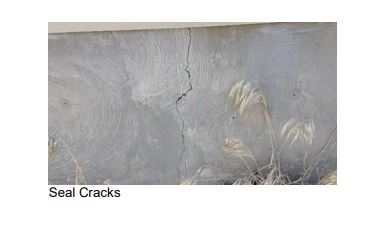
It’s a common thing. The buyer and seller have gone through so much back and forth to arrive at a price, but there’s that pesky inspection contingency left. Now, the inspection is done, and there are some items that don’t look right. The buyer is tired and just wants a house, at least one in good condition. But, the inspection report says it’s terrible. Accepting the property now could mean thousands of dollars of repairs after closing – paid by the buyer. This is why you must negotiate after the inspection.
Elements of the Inspection
The inspection is one of your biggest protections when buying. This applies to your primary residence to a 226-unit apartment in Bismarck. The inspection will talk about the conditions on the day of the inspection, such as the weather. It often gives a summary and then detail. It’ll have a lot of pages, 50-100 in my experience. It can be daunting. Go through it with your inspector and ask questions – that’s part of what you paid for.
The inspection will list the systems of the property, such as roof, windows, foundation, sidewalks, and others. A good inspector will look for every issue and will show you things present in most every building such as a crack in the sidewalk as well as big issues.

That’s a crack in the foundation. Seems scary – and it could be, but I know from experience that this particular one isn’t. It could use some concrete fill, which comes in a caulking tube and is repaired for $5. You might not know – which is why you’ll enlist help.
Of course, some issues are bigger. Like this one on the same property I ended up buying.

Yikes! That was on the roof and not visible from the ground. It’s missing a bunch of shingles that probably blew off in some storm. That’s an emergency repair because it’s probably leaking water into the attic. Turn to that page in the inspection document and see:
“Comments:
The attic interior was visually examined for leaks and/or water stains. No cracked trusses or rafters, stains, or leaks were observed at time of inspection.”
OK – so we have time, but I’m sure not paying for the roof. Time to negotiate. But how?
How to Negotiate After the Inspection
First thing is to decide what you will be negotiating on. A rule of thumb I go buy is if there was something evident to an ordinary person before I made my offer, I’m not asking the seller to pay for it. If the paint is peeling and looks terrible then that should be reflected by my offer price. Anyone can see that. I’m going to use that as a bargaining item on the negotiating later. The crack in the foundation above is evident, but not the impact of it. We will need to know the impact before deciding to negotiate on that. The roof above wasn’t evident, so I’m asking the seller to pay.
Second is to gather as much data as you can. The roof looks bad, but that repair is fairly low cost. The major price will be getting the labor done, assuming you can match the shingles. Get three roofing contractors out there for three bids. Yes, it’s a pain, but if it saves you $500 or more is it worth your time? Do the same for the foundation. Get three contractors out there for bids.
Third is sending information to the seller. The inspection form is owned by you. You do not have to show anything to the seller and you can pick and choose what you want to give. If you are asking the seller to pay for something, then you will cut out the relevant pages and email it over. Give the seller a spreadsheet of the quotes that you think are most reasonable. Remember, that you got three bids. Typically, it will be the highest reasonable one. Only show the seller one for each repair. Do this for most of the more expensive items, even the ones that you’ll just repair on your own dime later, like a broken outlet cover. The idea is to show them the sorry state the property is in right now. Later, you’ll back off on some of these. Don’t ask for anything yet, but do show your disappointment at these findings.
Fourth is to decide what you can agree to. The initial instinct is to think that the seller needs to do everything. That’s rarely going to happen. Decide which items are not important to you, like replacement of an outlet cover. There will be must repair items, such as the roof, and nice items, such as a cracked pane in a window.
Fifth is to negotiate. You will be able to ask for a seller credit, price decrease, or repair prior to closing. In a seller credit, the seller pays back to you money at closing. The price stays the same, but there is an accounting at the end. You usually don’t come out with cash. It’s all accounted for at closing. If the sale price was $100,000 and you negotiated a $5,000 credit, then this amount can offset certain fees such as taxes and closing costs. The buyer won’t get cash back.
The price decrease is going to mean that the $100,000 sale price is now $95,000. Often a seller will prefer this because the amount of real estate agent commission is less. As commissions change, the buyer may also appreciate this too. But, this strategy means that the buyer doesn’t get the benefit of having some costs offset.
The seller can do the repair prior to closing, but this is something that you should avoid as the buyer. This can delay closing while waiting for the work to be done. The buyer should inspect the work and may not approve it, which puts the closing in jeopardy. The seller’s motivation is to pay the lowest and may have sub-par work done. Try to avoid this strategy when possible.
Try to get in a room with the seller to do the negotiation. If you are using agents, then this is unlikely – they don’t want you to get together because sometimes the deal will fail and it introduces uncertainty about their commissions. You can still ask for it, though. By this meeting, you’ve already given the seller how much it will cost to repair and this will likely be shocking to them. They will likely anchor at this higher amount. At this point, you want to help them come to a good price.
Don’t offer a price, just take the time to discuss all the bids and findings. Speak in terms of ‘we need to do this’, not ‘you’ or ‘I’. “We have to find a seller credit that works.” If you are investing, explain how your underwriting doesn’t work unless the place either is purchased in a repaired state or there is a credit. You are hoping that the seller reveals a credit they are willing to give. Remember, you’ve given the seller everything. Keep the conversation on the items rather than the price. Once you can agree on the items, then the credit follows. “We need to have a working roof, so that’s got to be repaired right away.” Keep coming back to the needed items. When you get close, remind the seller that you are paying for the other items, such as the outlet cover and maybe the window pane. Remind the seller that these credits are what gets you to closing on time. If you can’t agree, you will need more time for the seller to do the repairs, and closing might not happen. Again, keep it on the items rather than the cost.
Remember, you are looking for the high dollar items to be replaced. You’ve already negotiated the price and this is not the time to gouge and squeeze out extra value, something called retrading. Don’t do that. Now is the time to get the price that does the repairs that gets the building’s value to what you originally agreed upon. Remind the seller of that. Enjoy your new property.

